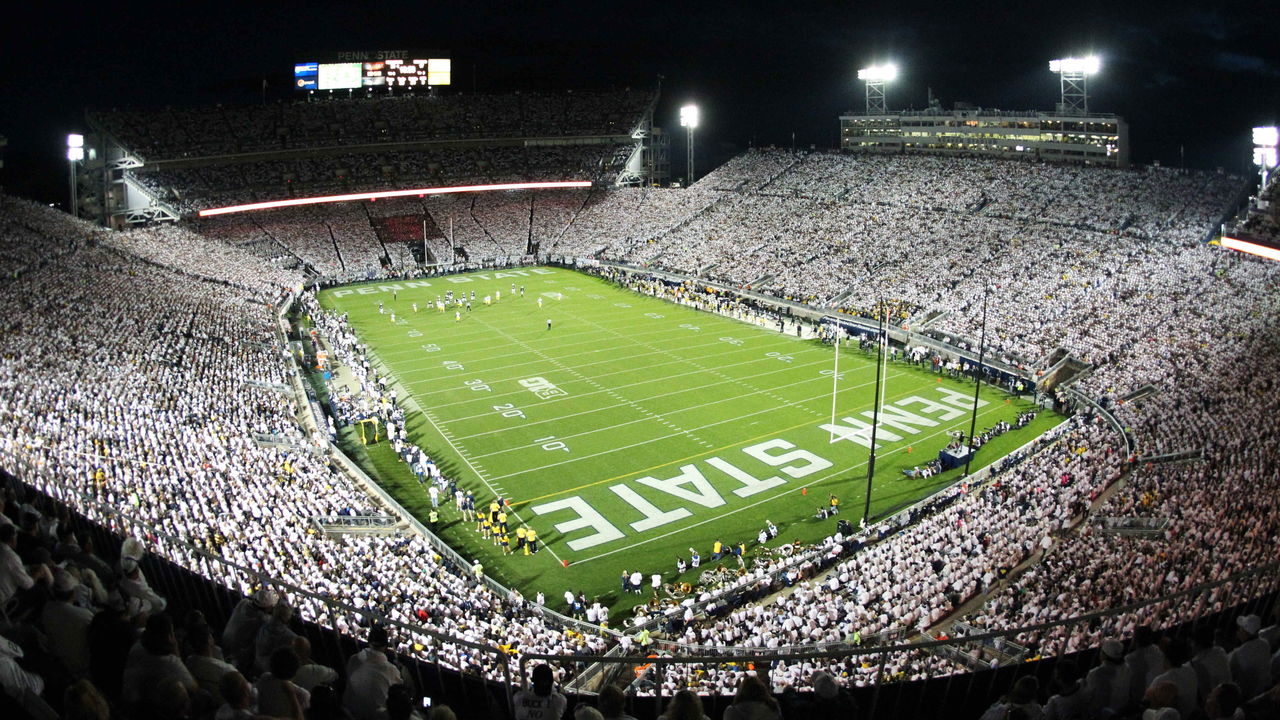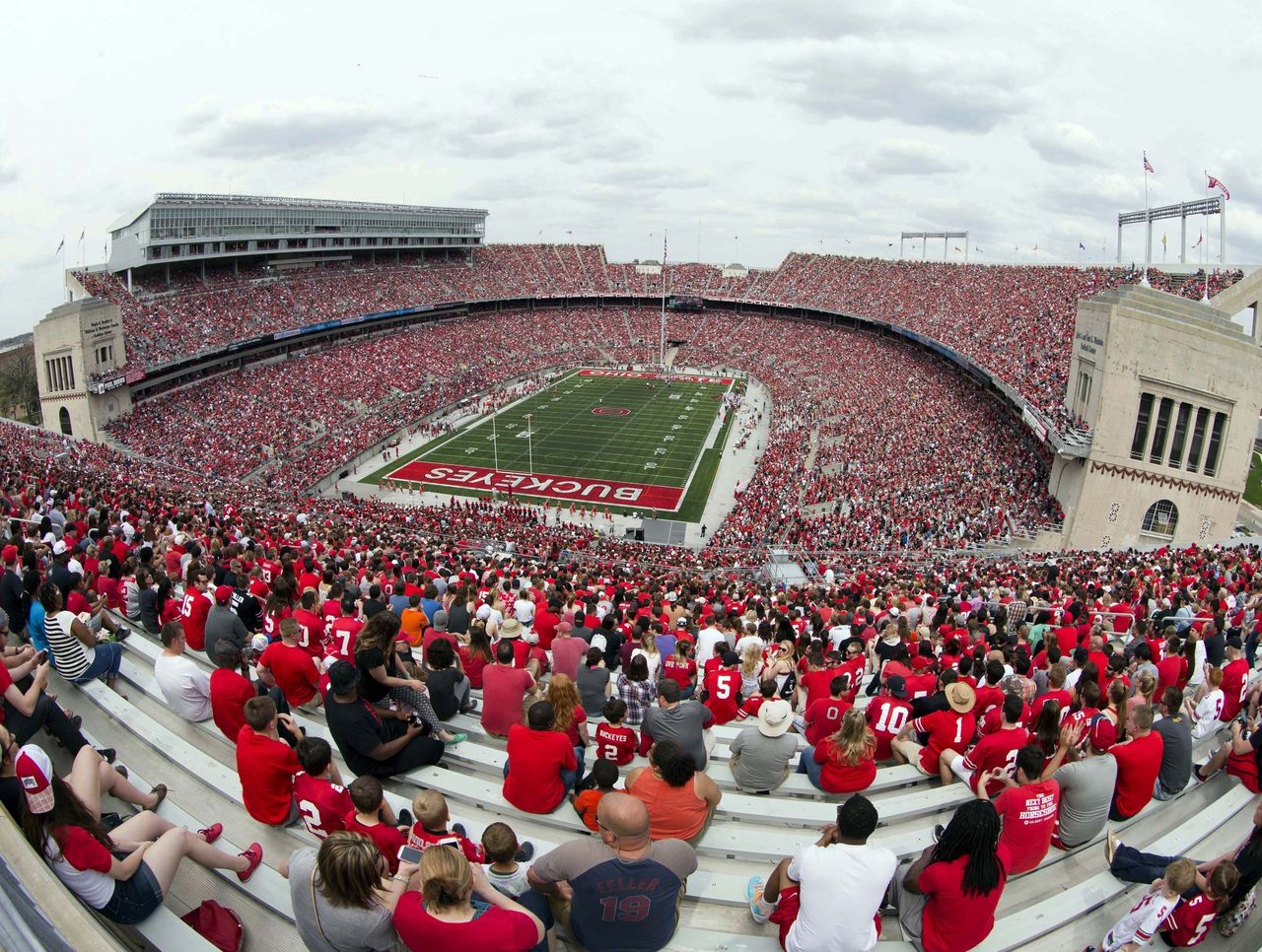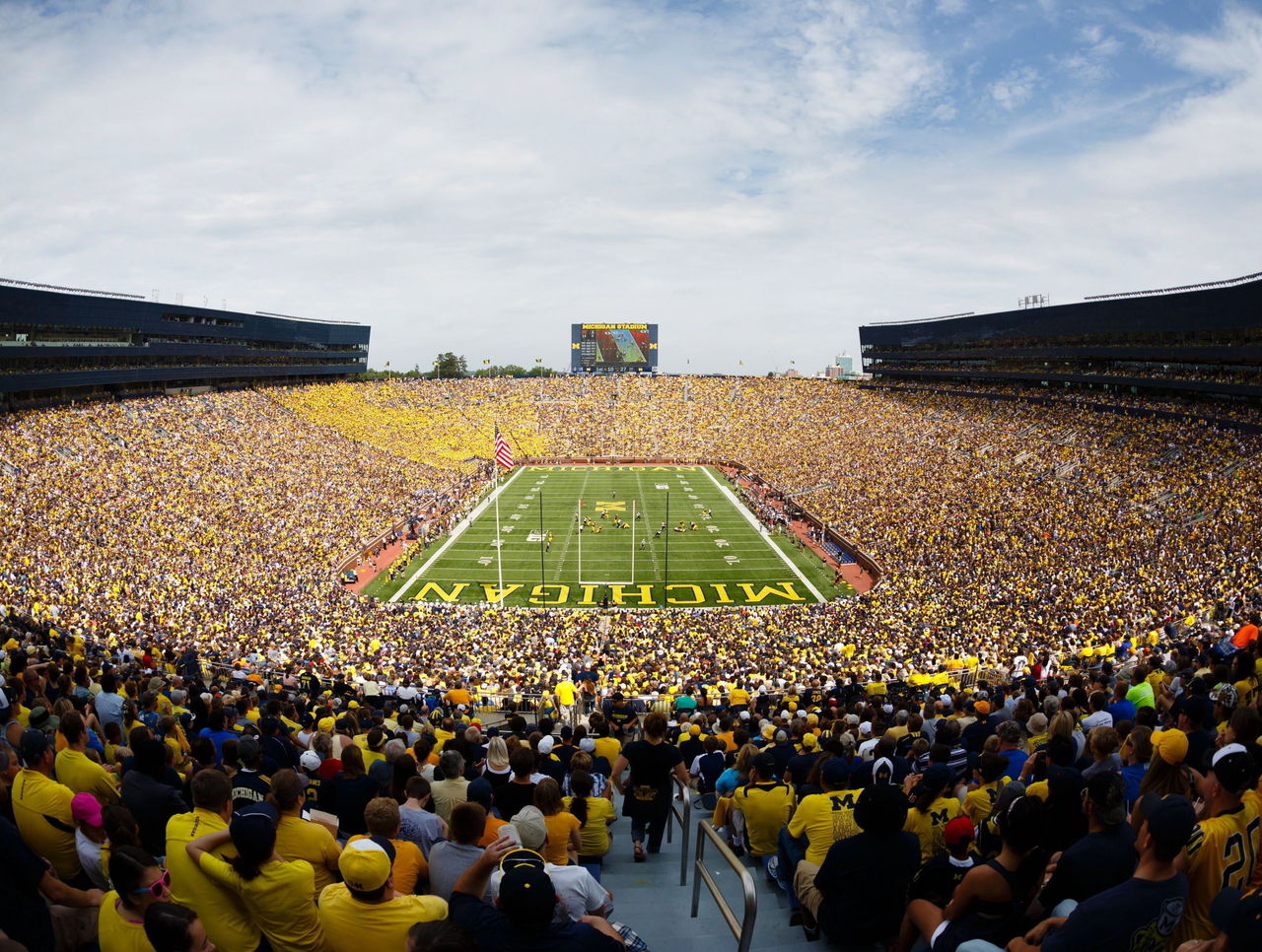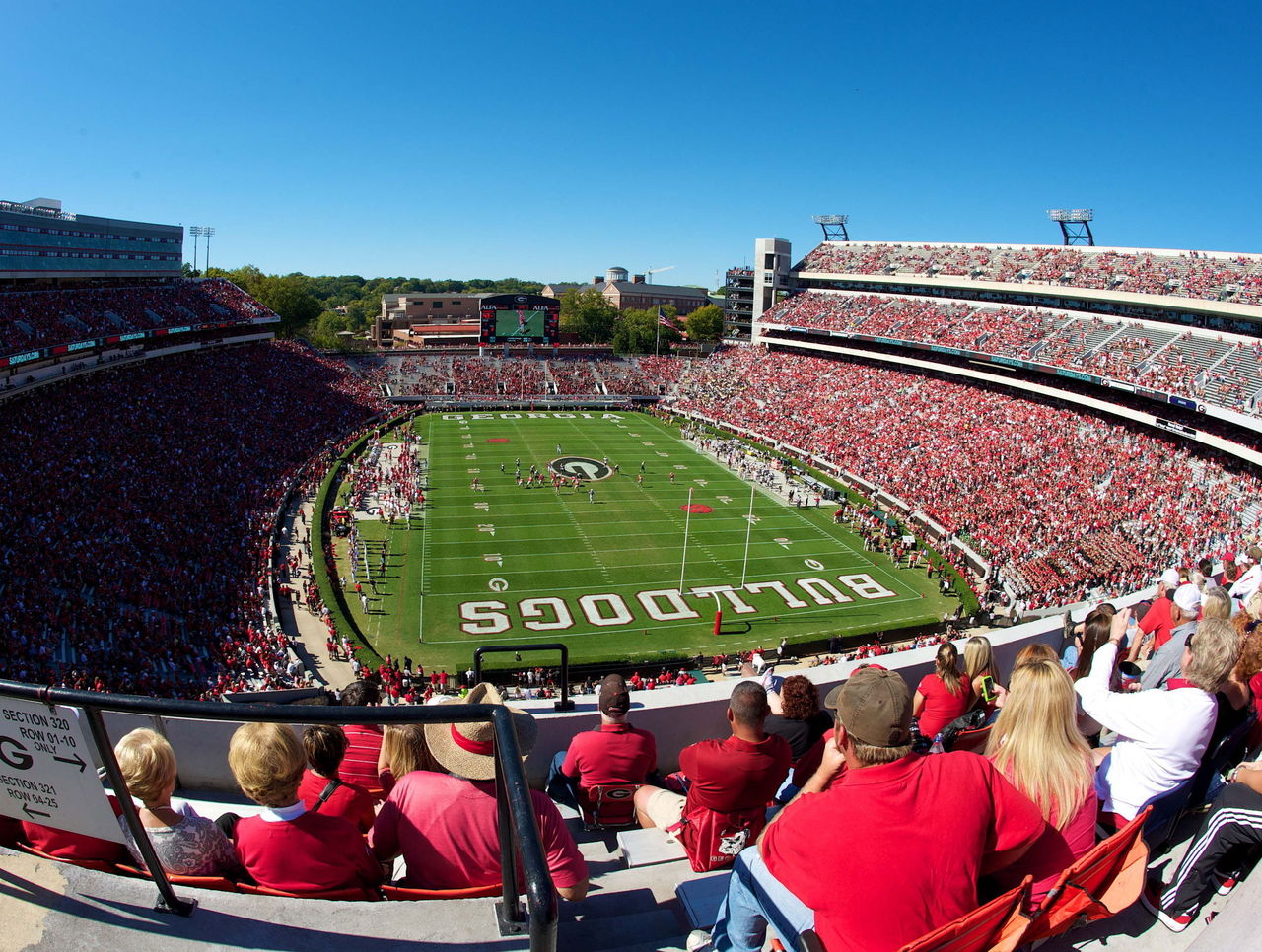Top 10 most imposing college football stadiums
Whether a team is suiting up on a Thursday or getting ready to do battle on a sacred Saturday night, there's an important element of game day that's often overlooked - the stadium itself.
Home-field advantage is a real thing. The structure - filled with rabid fans with eyes trained on its hallowed field - can have disastrous effects on rival teams.
Here are (arguably) the most imposing stadiums in college football:
Tiger Stadium "Death Valley" - LSU

After a big 2012 victory over South Carolina, LSU head coach Les Miles said his stadium is "the place where opponents' dreams come to die."
Tiger Stadium sets the bar for stadium atmosphere every season, and consistently proves a difficult locale for opponents to capture victory. Its moniker has also been "Deaf Valley," so calling the stadium loud is an understatement. To wit, in 1988 against Auburn with approximately 79,000 fans in the stands, the Tigers' late game-winning touchdown sparked cheers so loud they registered as an earthquake at the Louisiana Geological Survey. Now that the stadium has grown to seat over 102,321, all champing at the bit, the atmosphere causes communication problems for teams.
And if the noise doesn't get to opponents, this will: the sight of Miles holding back his rabid team as they attempt to escape the tunnel and make their entrance.
Beaver Stadium - Penn State

Penn State's Beaver Stadium may be located in quiet State College, Pa., but there's nothing meek or reserved about a stadium that can hold the second-largest crowd in college football.
The stadium is a sight to behold on game day when 107,282 white-clad fans roar at the Nittany Lions' enemies. The noise from the packed house is deafening, both frustrating and intimidating opponents. As players said in an anonymous 2013 survey: "When they have that White Out, it feels like it's you against the world. It's so hard to hear there," said one player. "Just the noise. It's such a tall stadium, it's really intimidating," said another.
Ohio Stadium "The Horseshoe" - Ohio State

Nestled in Columbus, Ohio State's home field of Ohio Stadium - aka "The Horseshoe" - has been magic since Urban Meyer took the helm in 2012, as the Buckeyes have lost only one game in front of their home crowd - 2014's contest against Virginia Tech.
Ironic given it's name, the stadium is no longer shaped like a horseshoe due to additional seating, which has only ensured that it's gotten louder and more distracting to opponents. The infamous "O-H-I-O" chant keeps going for minutes at a time by the 104,944 faithful in attendance, while fans shake the stands wildly when the White Stripes "Seven Nation Army" plays over the stadium speakers.
Ben Hill Griffin Stadium "The Swamp" - Florida

Ben Hill Griffin Stadium was affectionately nicknamed by former Florida head coach Steve Spurrier as "The Swamp," which is also representative of the humid weather that opponents struggle to play in.
The stadium - which seats over 88,500 - boasts a number of architectural elements that boost the Gators home advantage. The Swamp, built on a sinkhole, sits below ground level, allowing for noise to stay in the stadium. The visiting team is also positioned in the east, in direct sunlight, while the Gators get the benefit of some shade from the press box.
Bryant-Denny Stadium - Alabama

Tuscaloosa's Bryant-Denny Stadium is the perfect example of a number of intimidating factors working together to make a game tough for visiting opponents.
The only thing more fierce than more than 101,821 Alabama fans, clad in crimson and riled up for a good time, is the Crimson Tide football team itself, who have lost just three home games since their perfect 2009 season run ended in a BCS National Championship victory.
Oh, and the visiting locker room is named "The Fail Room" after alumnus James M. Fail. So there's that.
Autzen Stadium - Oregon

Oregon's Autzen Stadium is much smaller than the others on this list, seating just 54,000, but any rival will say it can get just as rowdy.
The relatively tiny Autzen packs an unexpected punch due to its design - Ducks fans sit practically on top of the sunken field, keeping the crowd noise trapped in the stadium. Heading into his third season with Oregon, head coach Mark Helfrich has lost just one home game, while his predecessor Chip Kelly lost just two games in four years in front of his home crowd.
The NCAA backed up this view in 2013, naming the Oregon stadium as the second-loudest college football stadium in the nation.
Michigan Stadium "The Big House" - Michigan

Michigan's The Big House is the largest college football stadium in the nation, stuffing over 109,901 fans into its classic bowl structure.
Despite home wins declining under now-fired head coach Brady Hoke, the sheer size of this place - virtually guaranteed to be filled to the brim - will give new coach Jim Harbaugh the energy he needs for his first season at the helm of the Wolverines.
Sanford Stadium - Georgia

Sanford Stadium has one of the most unique ways to separate the more than 92,000 Georgia fans from players - beautiful green hedges that encircle the field.
But don't let the shrubbery fool you, Sanford is a challenge to opponents. It's one of the few stadium that's positioned east to west instead of north to south, causing the sun to shine in the eyes of players due to the open west side. Bulldogs head coach Mark Richt is 76-15 "between the hedges," using the home field to full advantage.
Kyle Field - Texas A&M

Texas A&M's Kyle Field is steeped in tradition. Aggie fans represent the 12th Man, and remain standing throughout the game to signify that they're ready to step in and support their team - a tradition that stems from 1922.
But the intimidation factor of the stadium ultimately lies in its future plans. Kyle Field is undergoing a $450-million renovation that will make it the largest in the SEC, holding over 102,000 people. Plus, the stands have been reinforced so fans can jump around to Darude's "Sandstorm" to their hearts' delight.
Rose Bowl - UCLA

Sometimes it's the historical significance of a stadium that provides the intimidation factor.
Built in 1922, the Rose Bowl has seen distinguished athletic events of every variety. Seating over 92,542 raging fans, when teams enter its hallowed ground, they feel the pressure of the players to come before and the eyes of spectators on them.
UCLA is lucky enough to have the Rose Bowl as their home stadium, and it hosts the explosive cross-town rivalry between the Bruins and USC in alternate years.
Memorial Stadium - Clemson

Clemson's Memorial Stadium pairs crowd noise with an action-packed entrance that has rivals shaking in their cleats.
The Tigers come at their competition before the game even starts, building anticipation by boarding buses from the locker room and circling the stadium. Players then gather together at Howard's Rock - which an alumnus brought from Death Valley, Calif. and presented to late head coach Frank Howard - that they rub before running down the hill towards their opponents while the touchdown cannon sounds and fireworks explode overhead.